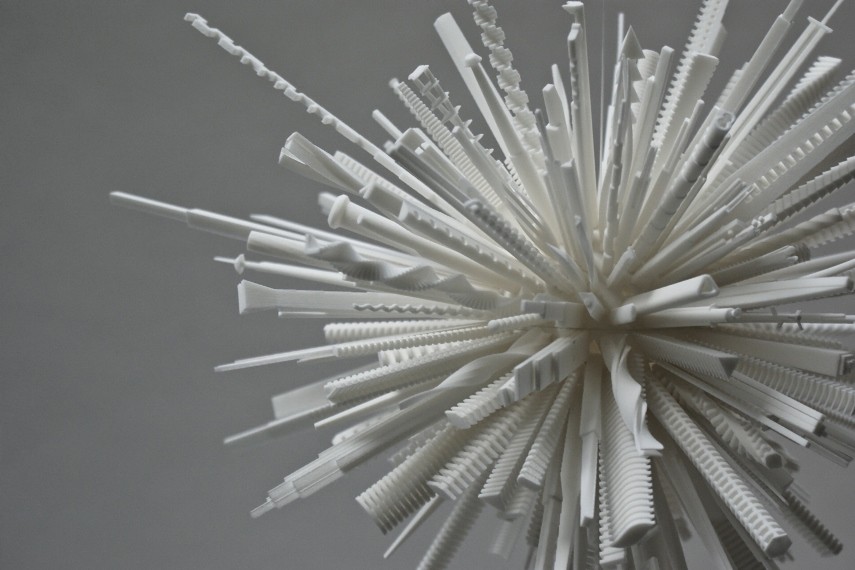The field of architecture has seen many advancements in recent years, but a fascinating one is the rise of 3D printed buildings. 3D printing technology has been used in various industries for a few decades now, but it’s only recently that it has been used to create installations on a large scale. In this article, we’ll explore what 3D printed structures are, how they work, and the implications of this technology for the future of architecture.
What are 3D Printed Buildings?
3D printed buildings are exactly what they sound like – constructed using 3D printing technology. Instead of traditional construction methods, which involve assembling individual components on site, 3D printed architecture buildings are created using a giant 3D printer that extrudes a particular type of concrete, layer by layer until the entire structure is complete.
The benefits
First and foremost, the process is incredibly efficient. Traditional construction can take months or even years to complete, while a 3D printed building can be completed in a matter of days or weeks. This means that 3D printed structures are faster to construct and less expensive.
Another benefit of 3D printed buildings is that they can be exact. The 3D printing process allows for intricate designs and shapes that would be difficult or impossible to achieve using traditional construction methods. It means that architects and designers have greater flexibility in creating strategies.
How Do 3D Printed Buildings Work?
The process of creating a 3D printed building is similar to the process of creating any other 3D printed object.
The first step is to create a digital model of the building using specialized software. This model is then sent to the 3D printer, which makes the building layer by layer.
The printer uses a particular type of concrete designed specifically for 3D printing. This concrete is made up of a mixture of cement, sand, and other materials optimized for printing. As the printer moves back and forth, layer by layer, it extrudes the concrete and builds up the structure.
One of the advantages of 3D printing is that it can create shapes and designs that would be difficult or impossible to create using traditional construction methods. Architects and designers have much more freedom to experiment and create unique and exciting buildings.
What are Architectural 3D Printing Services?
Architectural 3D printing services use large-scale 3D printers to create building components. These components can then assemble assembled on-site to make the building. The process begins with a digital model of the building that is created using computer-aided design (CAD) software. The model is then uploaded to the 3D printer, which makes each component layer by layer.
The Implications of 3D Printed Buildings for the Future of Architecture
The rise of 3D printed buildings has significant implications for the future of architecture. One of the most obvious implications is that construction will be faster and less expensive. It could be beneficial in areas where housing is needed quickly, such as after a natural disaster.
Another implication of 3D printed buildings is that they will change how architects and designers think about buildings. With 3D printing, there are fewer limitations on what can be built. Architects and designers can experiment with new shapes, designs, and previously impossible materials.
There is also the potential for 3D printing to make buildings more sustainable. Because the 3D printing process is so precise, there is less waste involved in the construction process. Additionally, 3D printed structures can be designed to be more energy efficient, with features such as solar panels and energy-efficient windows.
Architectural 3D Printing Services
While 3D printed buildings are still relatively new, companies already offer architectural 3D printing services. These companies work with architects and designers to create digital models of buildings, which are then printed using 3D printing technology.
One of the advantages of using an architectural 3D printing service is that it allows architects and designers to experiment with different designs and materials before construction begins. It can help identify potential issues or challenges before construction begins, saving time and money in the long run.
Architectural 3D printing services can also help to streamline the construction process. Because the buildings are constructed off-site, there is less disruption to the surrounding area. Additionally, printing is often faster and more efficient than traditional construction methods.
As 3D printing technology advances, we will see even more companies offering architectural 3D printing services. This could make 3D printed buildings more accessible to a broader range of architects, designers, and builders.
Challenges and Limitations of 3D Printed Buildings
While there are many benefits to 3D printed buildings, there are also some challenges and limitations to consider. One of the biggest challenges is that 3D-printed structures are still relatively new, and there needs to be more data on their long-term durability and performance. This means that it’s difficult to know how well these buildings will hold up over time.
Another challenge is that the technology still needs to be more expensive. While the cost of 3D printing technology is decreasing, it’s still more costly than traditional construction methods. This means that 3D printed buildings may only be feasible for some projects.
There are also some limitations to the types of buildings that can be constructed using 3D printing technology. Currently, the technology is best suited for simple, boxy structures. More complex shapes and designs can be challenging to create using 3D printing.
Conclusion
The rise of 3D printed buildings is an exciting development in architecture. This technology has the potential to revolutionize the construction industry, making installations faster, less expensive, and more sustainable. As 3D printing technology advances, more companies will likely be offering architectural 3D printing services. While there are some challenges and limitations to consider, the benefits of 3D printed buildings are significant. We live in a time of rapid technological advancement, and it’s exciting to think about what the future of architecture might look like.


